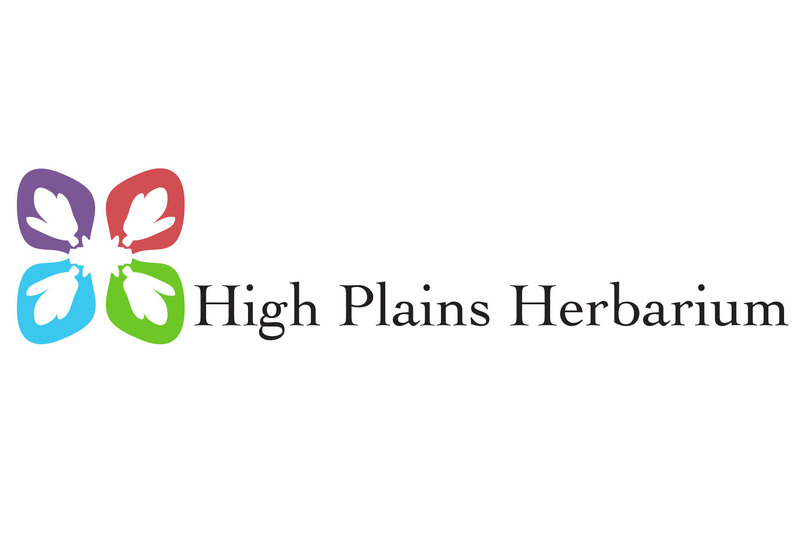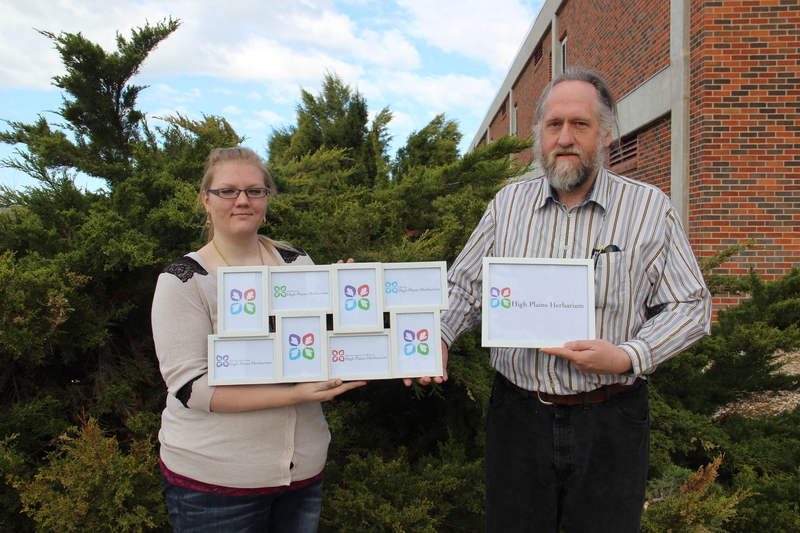Campus herbarium grows past 60,000 specimens

The High Plains Herbarium at Chadron State College has surpassed 60,000 specimens, according to herbarium director Steve Rolfsmeier. He said the collection, housed in the Math and Science building, currently stands at 60,789 specimens.
When he attended a workshop in December about digitizing herbaria collections under 100,000 specimens, he felt that CSC was likely the biggest collection represented. Each herbarium worldwide has a unique index code for reference purposes. The code for the herbarium on campus is CSCN.
In other areas of growth and outreach, Rolfsmeier plans to present about the herbarium at the Chadron Public Library in the next year. He is also collaborating with Sarah Polak, director of the Mari Sandoz High Plains Heritage Center, on herbarium exhibits students in her museum exhibits class are creating on the lower level of the Math and Science building.
He plans to establish a Facebook page and hopes to reach out to friends and colleagues of the late Dr. Ron Weedon to begin the establishment of a volunteer group, “Friends of the High Plains Herbarium.”
Rolfsmeier said the herbarium web page has been updated with the help of freshman Miranda Wieczorek of Grand Island, a student liaison in College Relations.
“Like all web pages, it is a work in progress but the new version is big step forward for us,” Rolfsmeier said. The address is csc.edu/sci/herbarium.
When the herbarium received an invitation last fall to become part of the Southwest Environmental Information Network, one of the items the organization requested was a logo.
At the same time, CSC senior Macee Kellner of Bucklin, Kansas, was taking a botany lab taught by Steve’s wife, Susan Rolfsmeier. Susan mentioned to Kellner that the herbarium needed a logo. Since Kellner was enrolled in graphic design practicum with Mary Donahue, she mentioned the need to the class but the students were too busy with numerous other projects.
Kellner had a prior interest in floriculture and horticulture through FFA and had time for the project this semester.
“So I just decided to go for it. They gave me a tour of the herbarium and I realized there was a lot going on here,” Kellner said.
She chose the blossom from Barr’s milkvetch as the basis of her design. She repeated it four times with each different colored petal representing one of the four components of the Herbarium: green for the herbarium, blue for the library, purple for special collections and red for the pharmacognosy collection.
Special collections include the personal herbarium of Claude A. Barr as well as his personal correspondence and effects.
The Pharmacognosy collection contains more than 10,000 historical pharmaceuticals and medicinal plant materials including several prescriptions signed by Dr. Walter Reed while assigned to Fort Robinson in the 1890s.
“It is modern, open to interpretation and can grow and change with the herbarium,” Kellner said of the logo.
She included the designs in her Senior Thesis Art Show this semester and has donated the framed pieces to the herbarium.
Barr (1887-1982) was a southwest South Dakota rancher who attained international acclaim as an eminent plantsman of the plains. He discovered milkvetch, a perennial that grows in low, dense mats with narrow leaves densely covered by short white hairs.
Barr wrote about it in “Jewels of the Plains” his posthumous book published with the assistance of former CSC botany professor Dr. Ron Weedon. The book is out of print but Rolfsmeier said Jim Locklear, director of conservation at the Lauritzen Gardens in Omaha, is planning to visit the Chadron area this summer and conduct research leading to the publication of an updated edition of the book.
Rolfsmeier said that Barr’s milkvetch is an appropriate symbol for the herbarium because it is endemic to the Northern Plains and Missouri Plateau, a region which begins just north of Chadron and stretches to Canada. The plant, classified with a status of “special concern,” typically grows on bare shale areas.
More information about the herbarium can be obtained by contacting Rolfsmeier at srolfsmeier@csc.edu or 308-432-6163.
Across campus to the west, a small exhibit on Barr, his life and work is located on the main floor of the Sandoz Center. A sample of the plants, including milkvetch, that Barr studied, collected and cultivated can be seen in the heritage gardens “living pathways” located east of the center.
A video featuring CSC horticulturist Lucinda Mays at sandozcenter.com/exhibits/heritagegardens.csc shows some of Barr’s plants in the gardens.
Category: Campus News, Range Management

